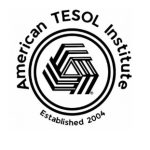Lights, Camera, Action! Filmmaking in the ESL Classroom
Filmmaking isn’t just for Hollywood anymore. It’s a fantastic way to engage your ESL students, boost their language skills, and foster creativity! Let’s explore the tools you’ll need and how to get started.
Benefits of Film Projects in ESL
- Enhances communication skills: Students practice speaking, listening, reading, and writing while planning, scripting, filming, and editing.
- Boosts confidence: Performing and presenting their work helps build students’ self-esteem and fluency.
- Promotes collaboration: Filmmaking is a team effort, encouraging cooperation and problem-solving.
- Encourages cultural understanding: Students can explore different cultures through storytelling and filmmaking techniques.
- Makes learning fun: It’s an engaging, hands-on activity that breaks the monotony of traditional lessons.
Creating Movie Projects
-
Brainstorming & Planning:
- Decide on the project type: short film, documentary, commercial, etc.
- Choose a theme or topic that connects to your curriculum.
- Outline the plot, characters, and setting.
- Write a script or storyboard.
-
Filming:
- Assign roles: director, actors, camera operators, sound recordists, etc.
- Encourage creativity and experimentation.
- Review footage regularly to ensure it’s aligned with the plan.
-
Editing:
- Trim and arrange clips.
- Add music, sound effects, and transitions.
- Incorporate subtitles or captions for language learners.
-
Showcasing & Reflection:
- Organize a class screening or share the film online.
- Encourage students to reflect on the process and their language learning.
Tips for Success:
- Start small: Begin with shorter, simpler projects to build confidence.
- Provide guidance: Offer support and feedback throughout the process.
- Embrace mistakes: Filmmaking is a learning process, and mistakes are part of it.
- Make it fun: Use humor, creativity, and technology to keep students engaged.
- Celebrate success: Recognize student efforts and achievements.
Conclusion
Film projects offer a dynamic and creative way to enhance language learning. By embracing this approach, you’ll empower your students to express themselves, collaborate effectively, and develop a deeper appreciation for the English language and culture
Parental Consent Form for Artificial Intelligence (AI) Use in the Classroom
[School Name]
[School Address]
[Contact Information]
Purpose
This form is to obtain your consent for your child, [Child’s Name], to participate in classroom activities that utilize Artificial Intelligence (AI) tools and technologies. AI can be used to enhance learning experiences, provide personalized feedback, and support student growth in various subjects.
Types of AI Tools
AI tools that may be used in the classroom include but are not limited to:
- Adaptive learning platforms: These platforms use AI to tailor lessons and activities to each student’s individual needs and learning pace.
- Chatbots and virtual assistants: These tools can provide students with on-demand support and answer questions.
- Language learning apps: AI-powered apps can help students improve their pronunciation, grammar, and vocabulary skills.
- Content creation tools: AI can be used to generate images, videos, and other multimedia content to enhance learning experiences.
Benefits of AI in Education
AI has the potential to revolutionize education by providing:
- Personalized learning experiences: AI can adapt to each student’s unique needs, providing tailored instruction and feedback.
- Increased engagement: AI-powered tools can make learning more interactive and engaging for students.
- Improved efficiency: AI can automate routine tasks, freeing up teachers to focus on more meaningful interactions with students.
- Data-driven insights: AI can collect and analyze data on student performance, providing teachers with valuable insights to inform their instruction.
Data Privacy and Security
[School Name] is committed to protecting student privacy and data security. We will only use AI tools that comply with all applicable privacy laws and regulations. Student data will be used solely for educational purposes and will not be shared with third parties without your consent.
Consent
I, [Parent/Guardian Name], hereby give my consent for my child, [Child’s Name], to participate in classroom activities that utilize AI tools and technologies. I understand the potential benefits and risks of using AI in education, and I have had the opportunity to ask questions and receive clarification.
Signature: ________________________________________
Date: ________________________________________
Please return this signed form to your child’s teacher.
Thank you for your cooperation.



